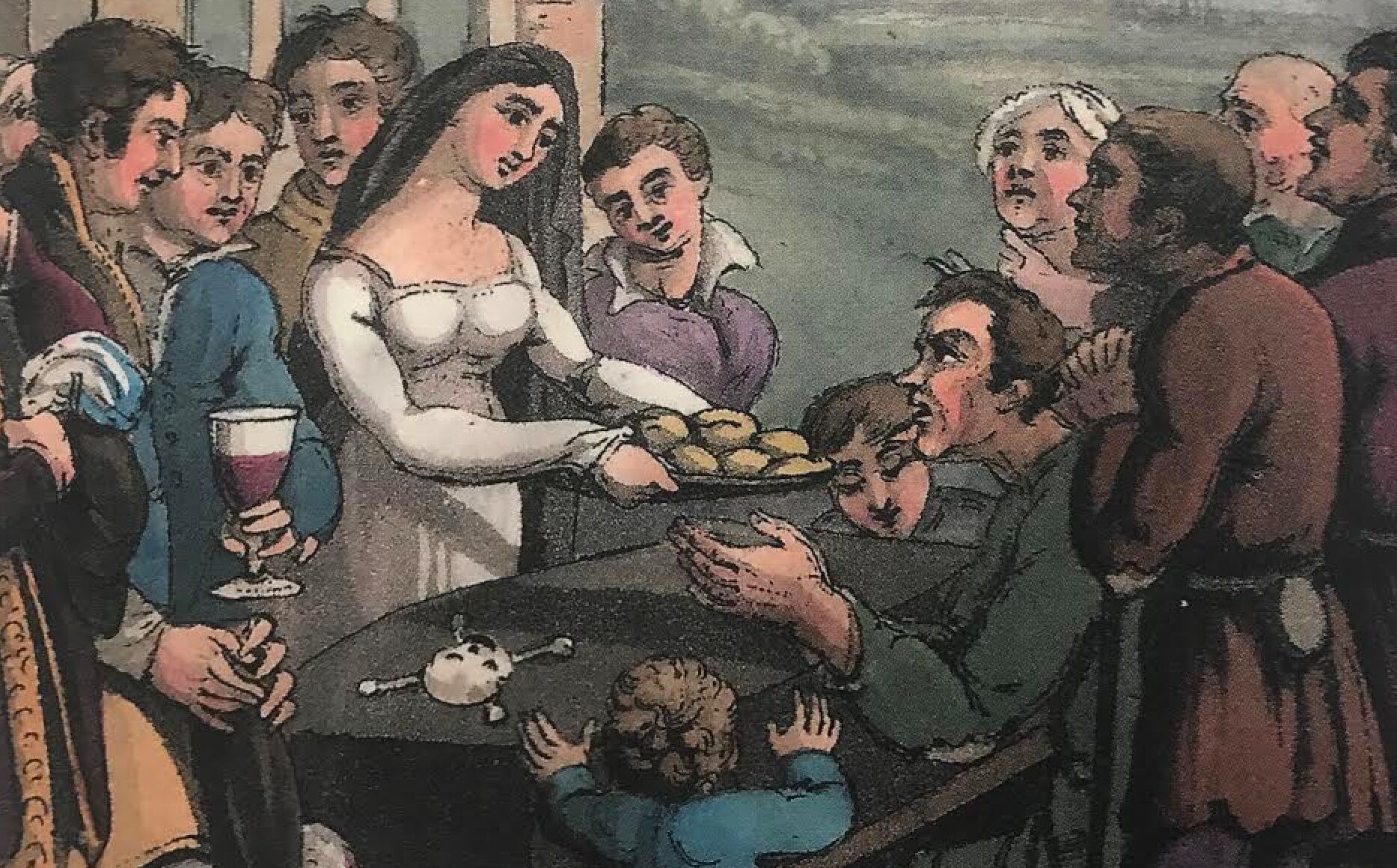
What is a Sin Eater? A Sin Eater was a person who, in old European traditions, would ritually take on the sins of a deceased person. This practice involved eating a piece of bread or cake placed on the chest of the dead, symbolizing the absorption of their sins. The belief was that this act would allow the deceased to rest in peace, free from the burden of their wrongdoings. Sin Eaters were often outcasts, living on the fringes of society, and their role was both feared and shunned. Despite its eerie nature, this tradition highlights fascinating aspects of human beliefs about sin, death, and redemption.
Key Takeaways:
- Sin Eaters were mysterious figures in Western Europe who absorbed the sins of the deceased. Despite being shunned, they played a crucial role in their communities, reflecting humanity's complex relationship with sin and redemption.
- The practice of sin eating declined as society evolved, but it continues to inspire literature and modern interpretations. Similar traditions exist in other cultures, highlighting the universal theme of absolution and the afterlife.
Origins of the Sin Eater
The concept of the Sin Eater is steeped in mystery and folklore. This practice, though largely forgotten today, once held significant cultural importance.
- The Sin Eater tradition originated in Western Europe, particularly in Wales and England.
- Sin Eaters were believed to absorb the sins of the deceased, allowing them to rest in peace.
- This practice dates back to the 17th century, though some believe it has even older roots.
- Sin Eaters were often marginalized individuals within their communities.
- The ritual involved eating a piece of bread placed on the chest of the deceased.
The Ritual of Sin Eating
The act of sin eating was a solemn and eerie ceremony. It was believed to cleanse the soul of the deceased, ensuring their passage to the afterlife.
- The bread used in the ritual symbolized the sins of the deceased.
- Sin Eaters would also drink a bowl of ale or wine as part of the ceremony.
- The ritual was often performed in secrecy, away from the eyes of the public.
- Payment for the Sin Eater's services was usually in the form of food or small coins.
- The Sin Eater would recite a prayer or incantation while consuming the bread and drink.
Cultural Significance
Sin Eaters played a crucial role in their communities, despite being shunned and feared by many.
- They were seen as necessary evils, performing a service no one else wanted to do.
- The practice reflected the deep-seated fear of dying with unconfessed sins.
- Sin Eaters were often blamed for misfortunes and seen as bearers of bad luck.
- The role of the Sin Eater was sometimes passed down through generations.
- Some believed that Sin Eaters themselves would be damned for eternity.
Decline of the Practice
As society evolved, the practice of sin eating began to fade, leaving behind only stories and legends.
- The rise of Christianity and its rituals contributed to the decline of sin eating.
- By the 19th century, the practice had largely disappeared.
- Modern funeral practices and beliefs in purgatory replaced the need for Sin Eaters.
- The last known Sin Eater in England died in the early 20th century.
- Today, sin eating is remembered more as a curiosity than a serious practice.
Sin Eaters in Popular Culture
The eerie and mysterious nature of Sin Eaters has inspired various forms of media and literature.
- Sin Eaters have appeared in novels, movies, and TV shows.
- The concept was featured in the 2003 film "The Order" starring Heath Ledger.
- Sin Eaters are often depicted as tragic figures burdened by their role.
- The practice has been explored in horror and fantasy genres.
- Some modern authors use Sin Eaters to explore themes of guilt and redemption.
Modern Interpretations
While the original practice has vanished, the idea of sin eating has evolved in contemporary contexts.
- Some view the Sin Eater as a metaphor for psychological healing.
- The concept is sometimes used in therapy to address feelings of guilt.
- Modern spiritualists occasionally reference Sin Eaters in rituals and ceremonies.
- The term "Sin Eater" is sometimes used to describe individuals who take on others' burdens.
- Sin eating has been reinterpreted in art and performance pieces.
Sin Eaters Around the World
Though primarily a Western European tradition, similar practices can be found in other cultures.
- In some Native American tribes, rituals involving the consumption of food to cleanse the soul exist.
- Certain African cultures have ceremonies to absolve the deceased of their sins.
- In Asian traditions, offerings of food and drink to the dead serve a similar purpose.
- The concept of transferring sins through ritualistic acts is a common theme globally.
- Sin Eaters in different cultures often held a sacred yet feared status.
The Legacy of Sin Eaters
The legacy of Sin Eaters continues to intrigue and inspire, reflecting humanity's complex relationship with sin and redemption.
- Sin Eaters remind us of the lengths people will go to ensure peace in the afterlife.
- The practice highlights the cultural importance of rituals surrounding death.
- Sin Eaters serve as a symbol of sacrifice and the human desire for absolution.
Final Thoughts on Sin Eaters
Sin eaters played a unique role in history. They took on the sins of the deceased, believing it would help the departed find peace. This practice, though strange to modern eyes, was rooted in deep cultural beliefs. Sin eaters often lived on the fringes of society, shunned yet needed. Their rituals, involving bread and ale, were simple but powerful symbols of absolution. While the practice has faded, its echoes remain in folklore and literature. Understanding sin eaters gives us a glimpse into how past societies dealt with guilt and redemption. It’s a reminder of the lengths people will go to seek forgiveness and ensure a peaceful afterlife. So next time you hear about sin eaters, remember their role in history and the fascinating beliefs that shaped their existence.
Frequently Asked Questions
Was this page helpful?
Our commitment to delivering trustworthy and engaging content is at the heart of what we do. Each fact on our site is contributed by real users like you, bringing a wealth of diverse insights and information. To ensure the highest standards of accuracy and reliability, our dedicated editors meticulously review each submission. This process guarantees that the facts we share are not only fascinating but also credible. Trust in our commitment to quality and authenticity as you explore and learn with us.


